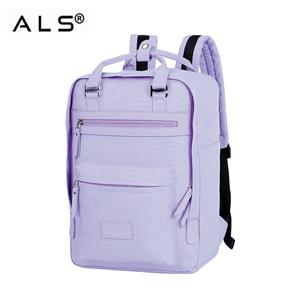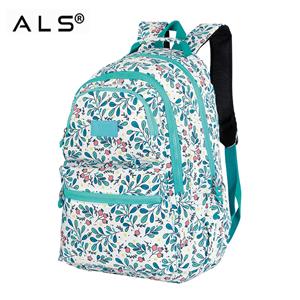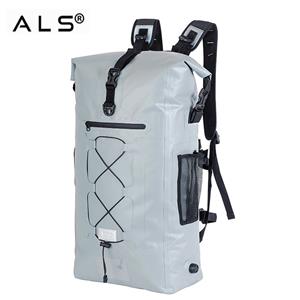Why backpack over luggage
If you're set on embracing one-bag travel or know you'll be encountering a wide variety of settings, from stairs to cobbled streets to rocky trails, skipping the wheels and opting for a pack will make traveling easier. A backpack lets you move more easily through crowds and changing terrain than with a wheeled bag in tow. And it keeps your hands free too. And hey, if you need to check luggage, you still might require a great carry-on backpack by your side.
So if you're keen to find the best travel backpack for you, these are some considerations to bear in mind.
Weight versus durability
Those packing pounds are precious and overweight baggage fees are certainly to be avoided whenever possible. So shedding some weight in your actual bag will help you stick within carry-on limits. But you also want it to be durable enough to withstand demanding travel use. After all, if it fails that leaves you and all your travel possessions in a tricky situation. In general, you may find yourself needing to sacrifice light weight for increased durability. But on the flip side, you don't want to be carrying a tank on your back either. Ultimately it comes down to a balance that suits your needs. If you know you'll be rough on your bag and ask it to endure tough use, it's better to take the weight penalty for greater durability. The less strain it needs to endure, the more weight savings you might make.
Think about how durable the material is (is it Cordura or X-Pac or canvas, for example?) and consider things like zipper and hardware quality too. For example, you'll want a burlier zipper for the main compartment where there will be more tension than on pockets. A quality name such as YKK is a good pick. Also look for good warranties. You want a bag that will last. But if something does happen to go wrong, a warranty can be reassuring.
Weather resistance
Sometimes it's sunny. Sometimes it's a drenching downpour. You should be prepared for both. Think about features such as water-resistant materials, water-resistant zippers for tech pockets, and raincovers for added protection. Most travel situations won't require completely waterproof bags so water-resistant should suffice for the majority of your trips. Plus you can always get waterproof pouches to store valuables and tech you don't want to get wet.
Size versus usable space
If you can manage it, opt for a bag that's suitable for carry-on use. This lets you keep your luggage with you and reduce the risk of losing it. It also helps you avoid checked luggage fees. Of course, it's important to confirm carry-on dimensions with your intended airline to ensure your pack fits the bill. But then things can start to get tricky with usable space. Two bags may claim to have the same volume but offer differences in the amount of usable space they provide. Awkward designs, tapering silhouettes and rigid materials with no give to them can restrict the gear you can pack. If you want space flexibility consider expandable designs, along with options for securing larger items externally to the pack, like PALS webbing.
Aesthetics
Sure, you might be a tourist. But that doesn't mean you want to look like one and draw unnecessary attention to yourself. The aesthetics of your travel backpack play a big role here, not to mention affecting versatility. Outdoorsy packs will look out of place in urban settings. Discreet and minimalist designs with subdued colors stand out less in a crowd. And such designs are easier to transition from a work meeting to a weekend away.
If you need a bag for work and play, consider one that lets you stow the straps and carry it briefcase-style for a more professional look. This also helps reduce the potential for snagging when fitting the bag in overhead bins, under seats or in small vehicle trunks. A pack with a slim profile is also easier for moving through crowds with. All that being said, you should feel happy with the style of bag you're carrying. And there's no reason you can't let a little bit of personality shine through in fabric or colorway choices. Just bear in mind how versatile you want that bag to be and how much you want to blend in.
Access
How easy is it to get to the main compartment for packing and retrieving gear? Clamshells or lay-flat designs are good options for being able to reach items easily throughout the main compartment. And quick-access pockets will keep essential items at the ready. Carrying tech? Dedicated easy-access storage for a laptop or tablet will come in handy too, especially for going through airport security.
Comfort
The degree of carry comfort you require will depend on how much load you're carrying and where you're traveling. Some packs also come in specific men's and women's options to better suit different body types. But comfy padded, ergonomic shoulder straps are pretty much a requirement for any good travel pack. If you need to carry a lot of weight you may want a hip belt, load lifters and a sternum strap to help stabilize and support the load. However, hip belts do add weight and aren't necessary for lighter loads, so you can shed weight when required by choosing a bag with a removable hip belt.
Also a breathable back panel with features such as air mesh or air vents can assist in keeping you cooler. This is particularly useful for traveling in hotter and humid climates. However, even in colder climates you're unlikely to be able to completely avoid sweat if you're walking around for an extended period of time with a load on your back. Being able to carry the pack as a shoulder bag or with a handle can help keep your back cooler.
Organization
If you favor packing cubes, you may prefer a main compartment with minimal interior organization. However, features such as internal dividers can help you adapt to different loads and you may still appreciate a few interior pockets for stashing smaller items. Regardless of interior organization preferences, pick a pack with at least a couple of quick-access pockets. These come in useful for storing items such as a passport, tickets, pen, wallet, phone or water bottle within easy reach so you don't need to rummage for them and undo your careful packing.
You might also want options for carrying bulky items such as sleeping mats, tripods, pouches and the like externally. If so, look for features such as external stretch pockets, attachment straps and loops or webbing to secure carabiners.
Security
You should mostly have your bag on you or close by during your travels. But opportunistic thieves may still chance their luck. Security features such as lockable zippers, anti-theft zipper loops, and discreet storage pockets for valuables can help deter them and protect your gear. Ultimately if they're determined enough they'll get in but such features make your bag a less appealing target and increase the chances that thieves will pass over it for an easier alternative.




